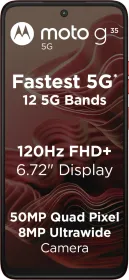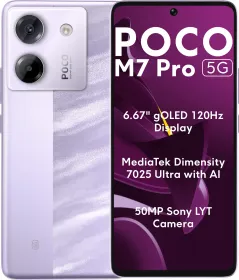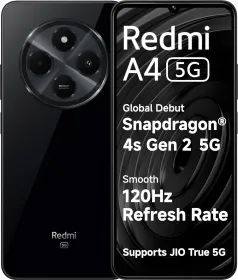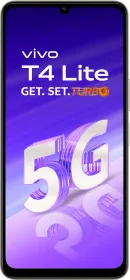Xiaomi’s sub-brand POCO has introduced a new addition to its M7 lineup with the POCO M7 5G. This model serves as the successor to the Poco M6 released in 2024 and complements the POCO M7 Pro, targeting budget-conscious consumers seeking a device priced under 10,000.
The POCO M7 5G boasts impressive specifications for its price, including a Snapdragon 4 Gen 2 chipset, a 120Hz display, a 50MP camera, and a 5160mAh battery. However, the question remains: can it outperform competitors such as the Redmi 14C, Samsung M06, and Moto G35 in practical use? Let’s explore.
ALSO SEE
- Havells Studio Air Purifier Meditate AP 400 Hands-On Review
- Samsung Galaxy S25 Review: Samsung’s Best Compact Phone Gets Better
- Nothing Phone (3a) Pro Review: Mid-Range Excellence with a Unique Twist
- vivo V50 5G Review: Photography Expert Inside, Stunner Outside
POCO M7 5G Price & Availability
The POCO M7 5G comes in two storage configurations-
- 6GB RAM+128GB storage-Rs. 9999
- 8GB RAM+128GB storage-Rs. 10,999
It is available in Satin Black, Mint Green and Ocean Blue hues. The smartphone can be purchased via Flipkart.
Pros
- Matte finish design
- Large battery
- Efficient performance
- Bright display
Cons
- Inadequate brightness
- Slow charging speed
- Cameras could have been better
- Bloatware
POCO M7 5G Review: Design & Build

Upon first glance at the POCO M7 5G, you will likely recall its counterpart, the Redmi 14C. Those familiar with the Redmi 14C will recognize the similarities, as both devices exhibit nearly identical designs, dimensions, and certain specifications. The most notable distinction between the two smartphones is the POCO branding.
The POCO M7 5G showcases a flat-edge design that imparts a premium feel, even though it is constructed from plastic. It is available in three color variants: satin black, mint green, and ocean blue, with the blue model being the one I reviewed.
The rear of the device predominantly features a matte finish, except for the upper section housing the camera module, which has a glossy, satin-like appearance. While the glossy area tends to attract smudges, the matte section resists fingerprints more effectively. In summary, the smartphone presents an elegant and high-quality aesthetic.


Upon first picking up the phone, I noticed its weight of 204 grams made it feel somewhat bulky; however, the weight distribution is quite balanced, making it comfortable to hold. With a thickness of 8.22mm, it does not have an ultra-slim profile.
Additionally, individuals with smaller hands may find it a bit challenging to manage with one hand. A notable feature of the POCO M7 5G is its IP52 rating, which provides resistance against dust and splashes. While it is not completely waterproof, it can withstand light rain or minor splashes without significant problems.


The rear of the smartphone features a prominent circular camera module that contains a dual lens configuration along with an LED flash. In terms of ports, the bottom edge is equipped with the primary microphone, a USB-C port, and a speaker grille, while the top edge accommodates a 3.5mm headphone jack.
The power and volume controls are located on the right side, placed well, and the SIM tray is situated on the left. One notable absence is the IR blaster, which is commonly seen in Poco and Redmi devices.
POCO M7 5G Review: Display

The POCO M7 5G features an expansive 6.88-inch HD+ display, making it one of the largest options available in the sub-10k price range. This sizable screen is well-suited for gaming and media consumption, and although it utilizes an LCD panel, it delivers vibrant and dynamic colors.
While there are noticeable bezels at the bottom, they can be overlooked given the device’s affordability. In terms of color accuracy, it performs reasonably well, and the viewing angles are satisfactory as well. The resolution is a bit on the lower side, at 720p.
The display features a 120Hz refresh rate, providing an exceptionally smooth experience for activities such as reading or browsing social media. It boasts a peak brightness of 600 nits, which ensures decent visibility indoors.
However, challenges may occur when using the device in direct sunlight outdoors. Additionally, the POCO M7 5G’s display is TUV Rheinland certified, minimizing blue light exposure—a notable advantage in this category, positioning it among the top options available.
POCO M7 5G Review: Speakers and Haptics
The POCO M7 5G is equipped with a single bottom-firing speaker that provides sufficient volume for regular content consumption; however, it lacks the depth and richness that audiophiles seek. For an enhanced audio experience while gaming or watching videos, utilizing wired or wireless earphones is recommended.
Additionally, the device features an in-display fingerprint sensor, which has replaced the side-mounted version present in the POCO M6. During our testing, this sensor proved to be dependable and effective.
POCO M7 5G Review: Performance & Software

POCO has equipped the M7 5G with the Snapdragon 4 Gen 2 chipset, a 4nm system-on-chip designed for optimal efficiency and power management. This chipset performs admirably, providing reliable performance for daily activities such as social media browsing, making calls, watching videos, playing casual games, utilizing the camera, and using applications like WhatsApp, all without significant lags or interruptions.
In the AnTuTu benchmark assessment, the device achieved a score of 434078, which is commendable for an entry-level smartphone. It is equipped with a chipset alongside 6GB of LPDDR4X RAM and 128GB of internal storage.
The RAM can be virtually expanded by an additional 6GB, further enhancing performance. The 128GB of storage provides sufficient capacity for local data, and it can be expanded up to 1TB if necessary.
In the realm of gaming, lighter titles such as Candy Crush, Subway Surfers, and Township performed seamlessly for extended periods, exhibiting no lag or overheating issues. Conversely, when testing more demanding games like BGMI and Asphalt 9, a noticeable decline in frame rates occurred after some time, particularly during high-intensity combat scenes, which also caused the device to warm up slightly.
Regarding connectivity, the POCO M7 5G is equipped with dual SIM 5G capabilities, WiFi 5, and Bluetooth 5.1. Additionally, it features FM Radio, which operates only when a wired headphone is connected, as it serves as the antenna.
Now, let’s discuss the operating system. The POCO M7 5G operates on Hyper OS, which is based on Android 14, right from the start. Poco has committed to providing two major Android updates and four years of security patches, which is a commendable promise for a budget-friendly smartphone.
The user interface includes a range of personalization and customization features; however, the presence of pre-installed bloatware can be a drawback. While most of this bloatware can be removed, it can still be somewhat bothersome. On the positive side, the UI is intuitive and operates smoothly. Notable features of the UI include Reading Mode for display adjustments and Game Turbo for enhanced performance.
POCO M7 5G Review: Cameras

The POCO M7 5G features a dual lens setup at the back including a 50MP Sony IMX852 1/2.96-inch main sensor and a 2MP depth sensor. The camera app features a dedicated 50MP mode to click high quality photos and there is a Google Lens integration too. There are camera effects and beauty mode too. At the front is an 8MP sensor for selfies and video calls.
Let’s talk about the 50MP main sensor first. The performance of the main camera can be described as a mixed bag. In natural daylight, which is adequate, the shots come out to be dynamic and detailed. The colors in these photos are decent, but the highlights can look blown out in some high contrast scenes.










As soon as the lighting gets dull or inconsistent, the sensor struggles to capture good shots. These images are grainy and have loads of noise, thus degrading the quality of the images. Using Night Mode does make images brighter and slightly better, but this might not be enough for many.
2MP depth sensor assists you with the portrait mode. The images clicked are decent but edge detection isn’t always perfect. Especially in low light this sensor struggles producing shots with extra softness and noticeable noise.









8MP selfie sensor performs decently in well-lit environment. The sensor captures almost accurate skin tones and software-based beauty mode smoothens skin to hide any marks or blemishes on your face. If you want selfies with sharp details, turn the beauty filters off. In indoor lighting conditions, the selfies are noisy and the sharpness is arguably very low.


Videos can be recorded in 1080p at 30fps but you won’t find OIS or EIS support so stability is doubtful. Quality of videos is strictly ok and these lack detailing as well.
POCO M7 5G Review: Battery Life and Charging

Under the hood, POCO M7 5G packs a 5160mAh battery that easily gives a full day of power for moderate to even heavy usage, all thanks to the Snapdragon 4 Gen 2 chipset. I performed tasks like light gaming, social media browsing, listening to music, watching videos, calling, messaging, and using the camera, and even then there was 12% battery at the end of the day.
Charging is one department, where POCO M7 5G disappoints. It supports 18W wired charging speed that takes 1 hour 50 minutes to charge the device from 0 to 100%. The adapter bundled inside the box supports 33W charging, but device supports 18W charging speed. In today’s era of fast charging speeds, this feels underwhelming, but then you can’t get everything in a device priced under 10k.
Review Verdict: Should You Buy the POCO M7 5G?
Smartprix Rating: 7.5/10
Design and Build: 8.5/10
Display: 7.5/10
Speakers & Haptics: 7.5/10
Software: 8/10
Performance: 7/10
Cameras: 6.5/10
Battery Life & Charging: 8/10
The POCO M7 5G, starting at Rs 9,999, presents a solid choice for budget-conscious consumers seeking a 5G smartphone. Powered by the Snapdragon 4 Gen 2 chipset, it delivers adequate performance for everyday tasks. Additionally, the battery life is satisfactory, and the inclusion of a 120Hz refresh rate enhances the overall user experience.
However, the camera quality is merely average, and the software is cluttered with unnecessary bloatware and intrusive notifications. The device comes pre-installed with Android 14 and is limited to just two operating system updates, whereas competitors like Samsung provide four OS updates with their M06 5G and F06 5G models in a similar price bracket.
First reviewed in March 2025.























































